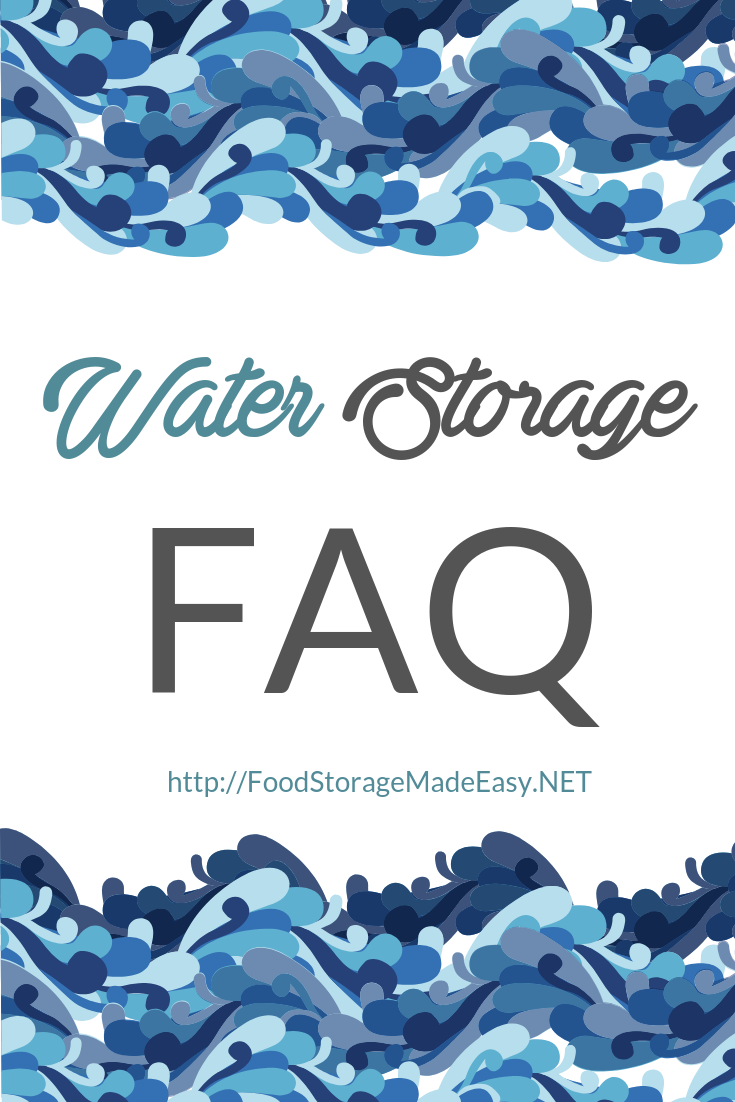
Storing water is something that is SO important, and something we get asked about all the time here at Food Storage Made Easy. We created an entire water storage series on the blog to help answer all of the questions we get asked regularly in our Facebook Group. This post will be an overview / summary that you can use to refer back to as you continue to work on your water storage.
Here are some of the questions we were asked by you, our readers when we started the series. Through out the series, we’ve covered these answers in different posts.
What types of water storage containers are best?
In our post about “Water Storage Containers”, we covered all sorts of container options. Some were free, some were more expensive to fit custom needs.
Where can you find containers for free or cheap?
Our post about “Water Storage Containers” covers this topic as well. You can use old juice bottles, and soda bottles. Make sure not to use old milk gallon type containers as they deteriorate over time and will leak.
How can you store water with limited storage space?
Many of the “Water Storage Containers” we talked about can be stacked in closets, under beds, or behind couches. If space is still a limitation, it may be wise to determine where your closest source of water may be (river, pond, lakes) and have “Water Filtration Versus Water Purification methods you can turn to.
When and how should you treat your water before storing?
In the post “All About Water Rotation”, we give you tips on how to rotate water less often. This can be accomplished by treating your water.
How often should you rotate your water and how do you do it easily?
In our post “All About Water Rotation” we covered why you rotate water, how often you rotate water, tips to rotate less often, what to do with rotated water, and how to improve water that hasn’t been rotated.
How can you make water rotation more efficient?
Using containers that are either easy to move, or have built in rotation mechanisms like the “Water Barrels” we talked about, helps make water rotation easier. Being able to pour water out easily, or drain it easily help with rotation.
What is the difference between water filtration and water purification?
The basic answer to this question is: Filtration is taking larger impurities out of water (like a strainer). Purification is taking out bacteria and viruses from water. Learn more about this, and methods to filter and purify in our “Water Filtration Versus Water Purification” post.
How do you deal with long term water emergencies?
There are many water saving tips we talked about it our “How to Deal With Long Term Water Loss” post. There are many things you can do to conserve water in an emergency where you may not have stored enough.
WATER SERIES POSTS
Here is a list of all the posts we did throughout our water series the past few weeks. There are also a few here listed we covered in the past. We hope they have been helpful and good luck starting, or keep on working on storing your water:
- BabyStep 2: Water
- Water Storage Containers: Pros and Cons
- All About Water Rotation
- How to Deal With Long Term Water Loss
- Water Filtration Versus Water Purification
- Water Barrel Towers
- Water Evaporation Still
- Beyond the BabySteps Water Purification
- Alternate Water Sources
WATER STORAGE PRODUCTS
Here is a list of useful water storage products we talked about throughout the series, and a few extras you may find suitable to your situation:
- Water Barrels
- Water Towers
- Water Bricks
- Aquamira Water Treatment
- Berkey Water Filters
- Emergency Water Pouches
- Aqua Blox Water Box
Pin This Water Storage FAQ Post to Save for Later


-Jodi Weiss Schroeder
http://foodstoragemadeeasy.net


